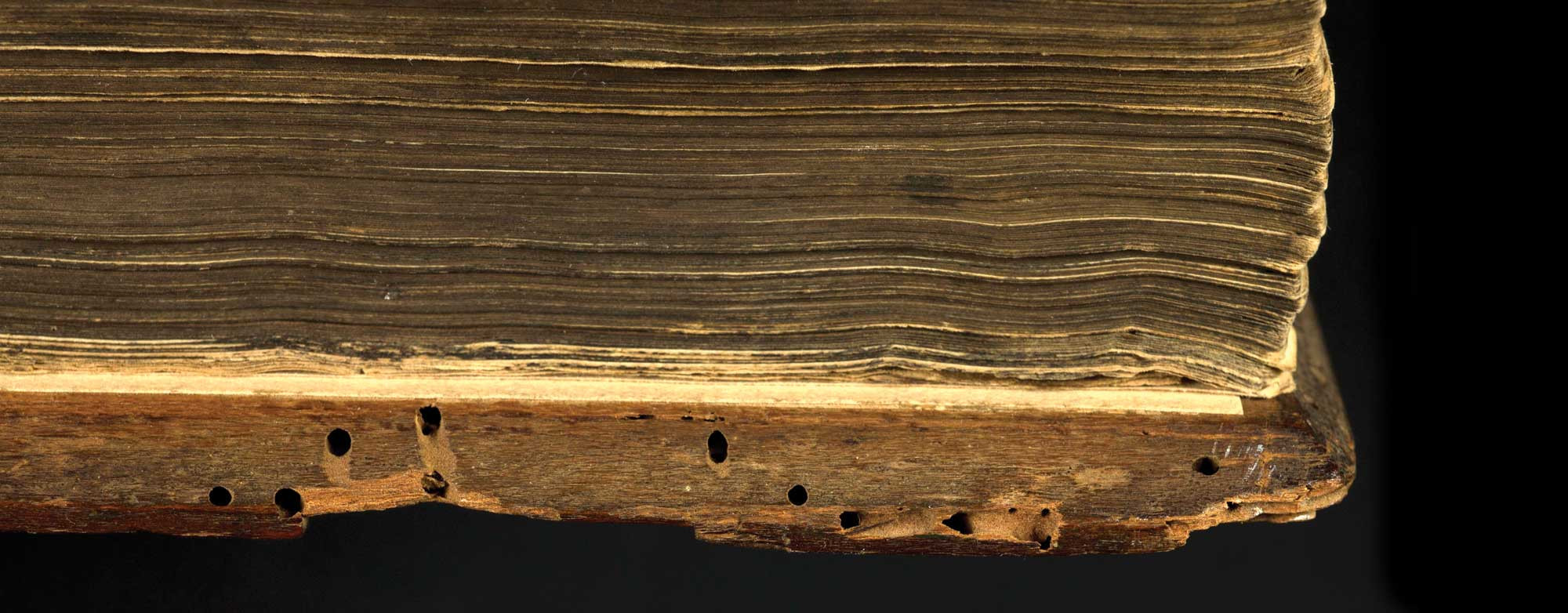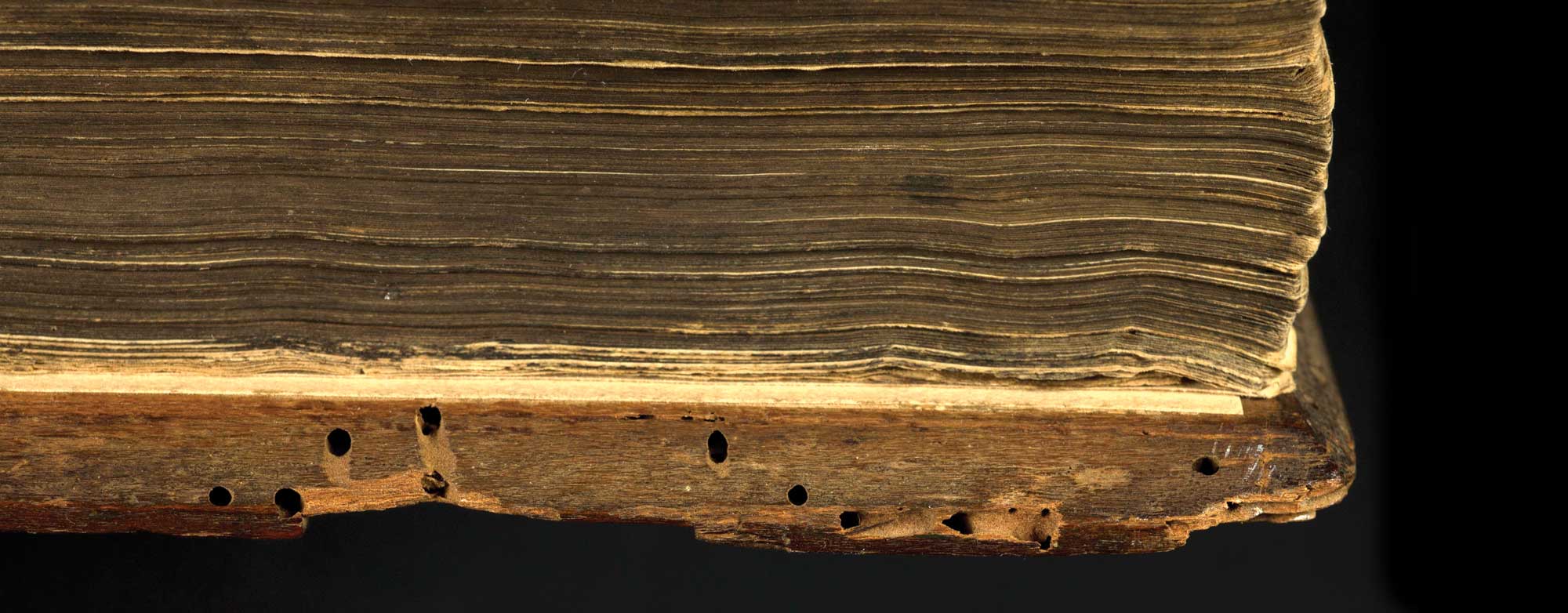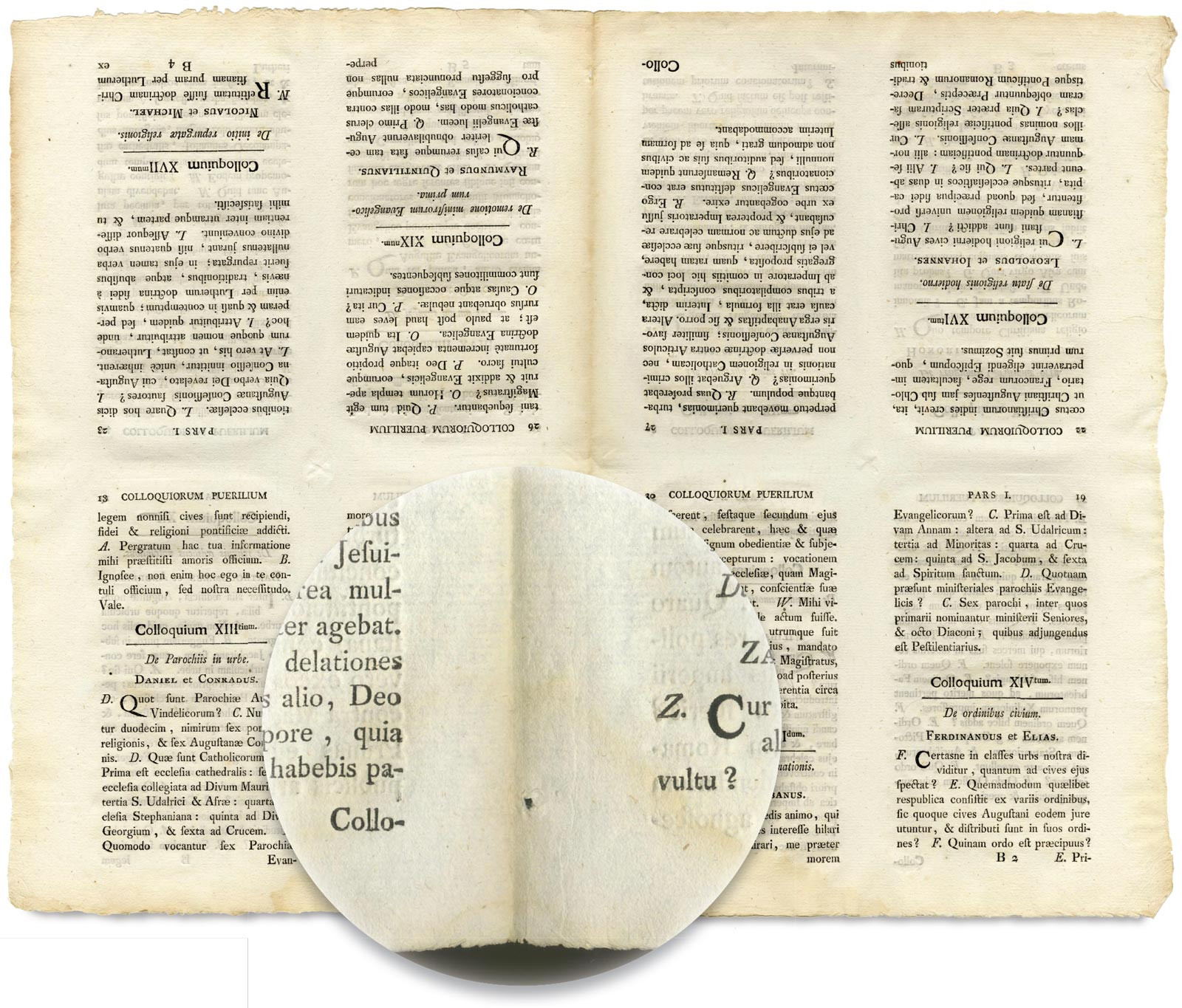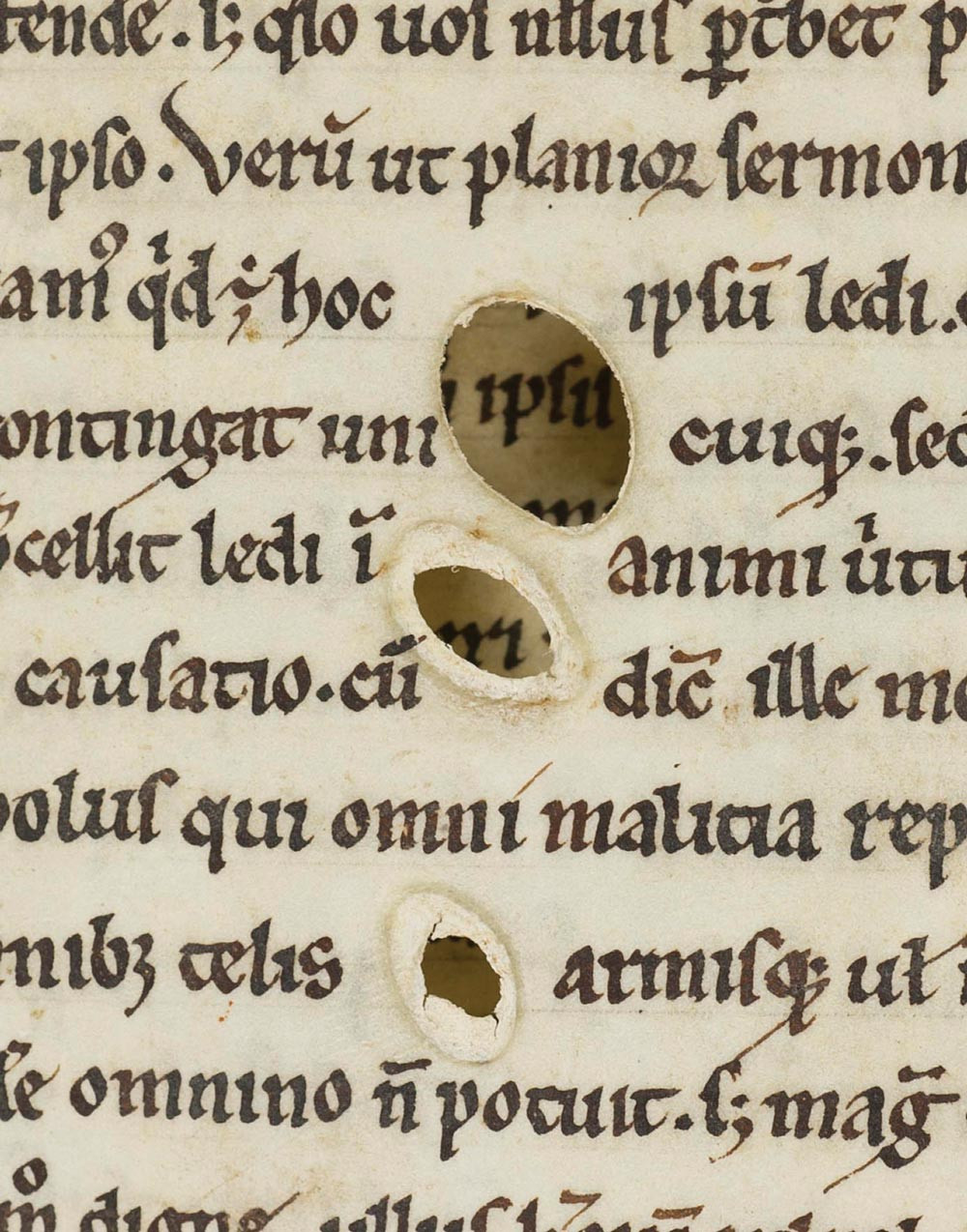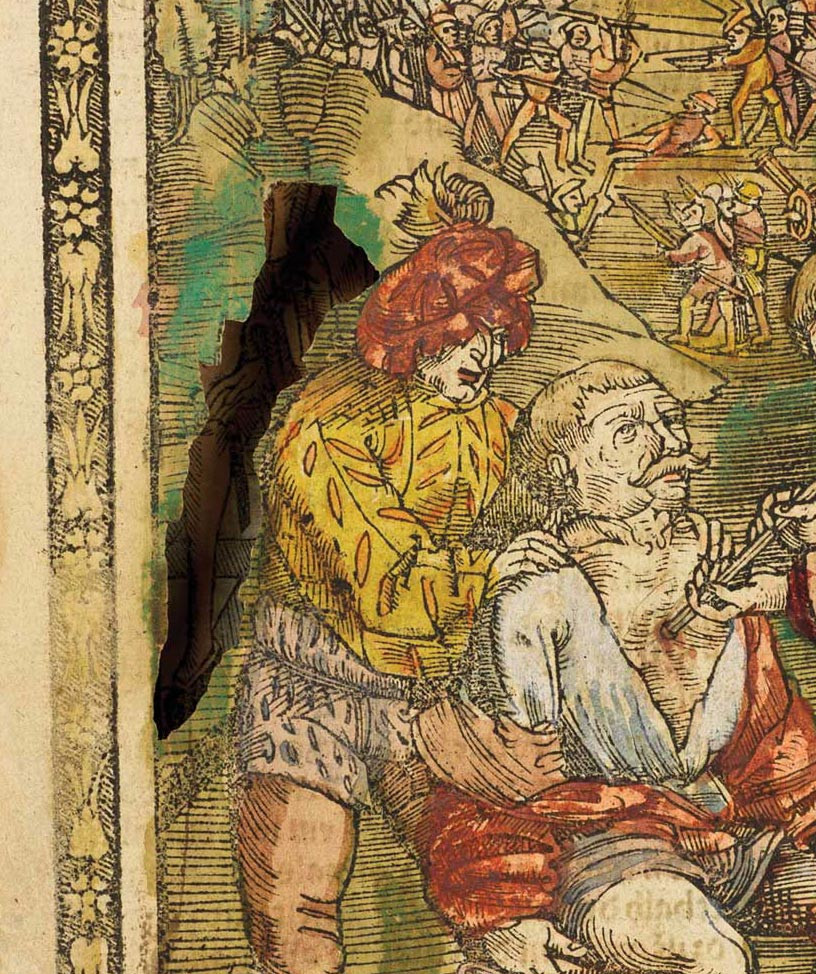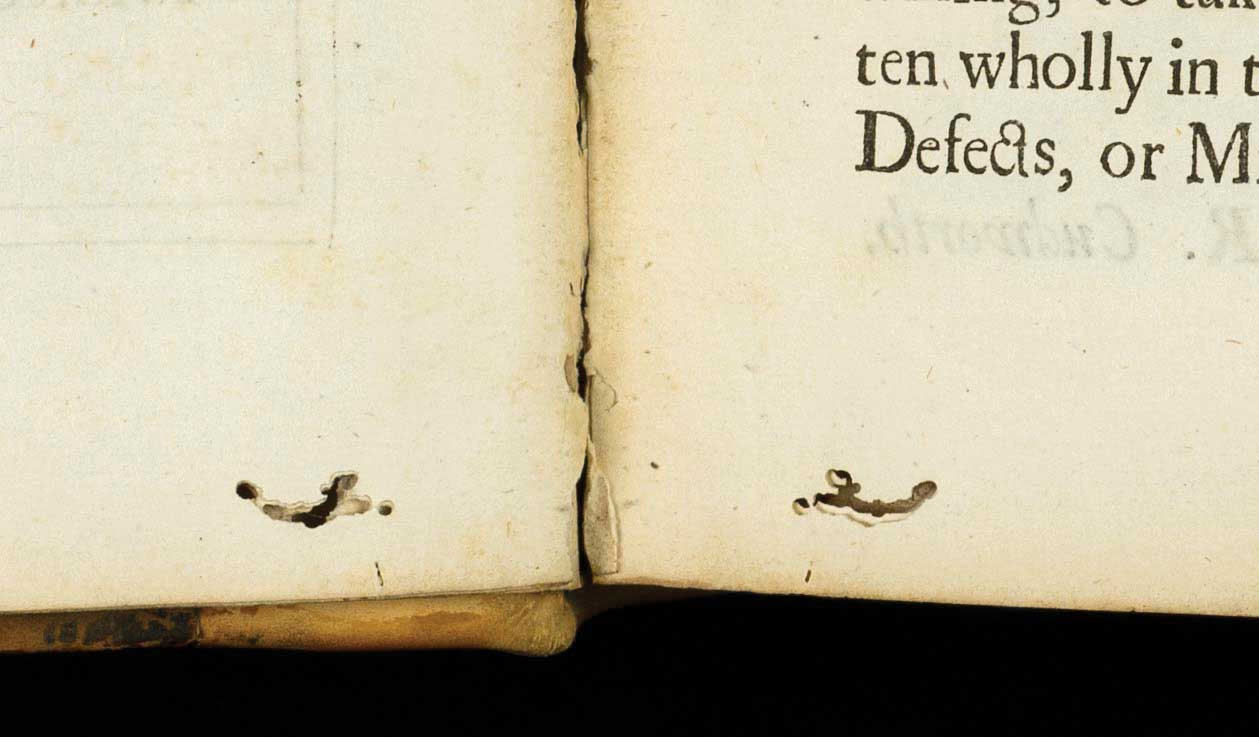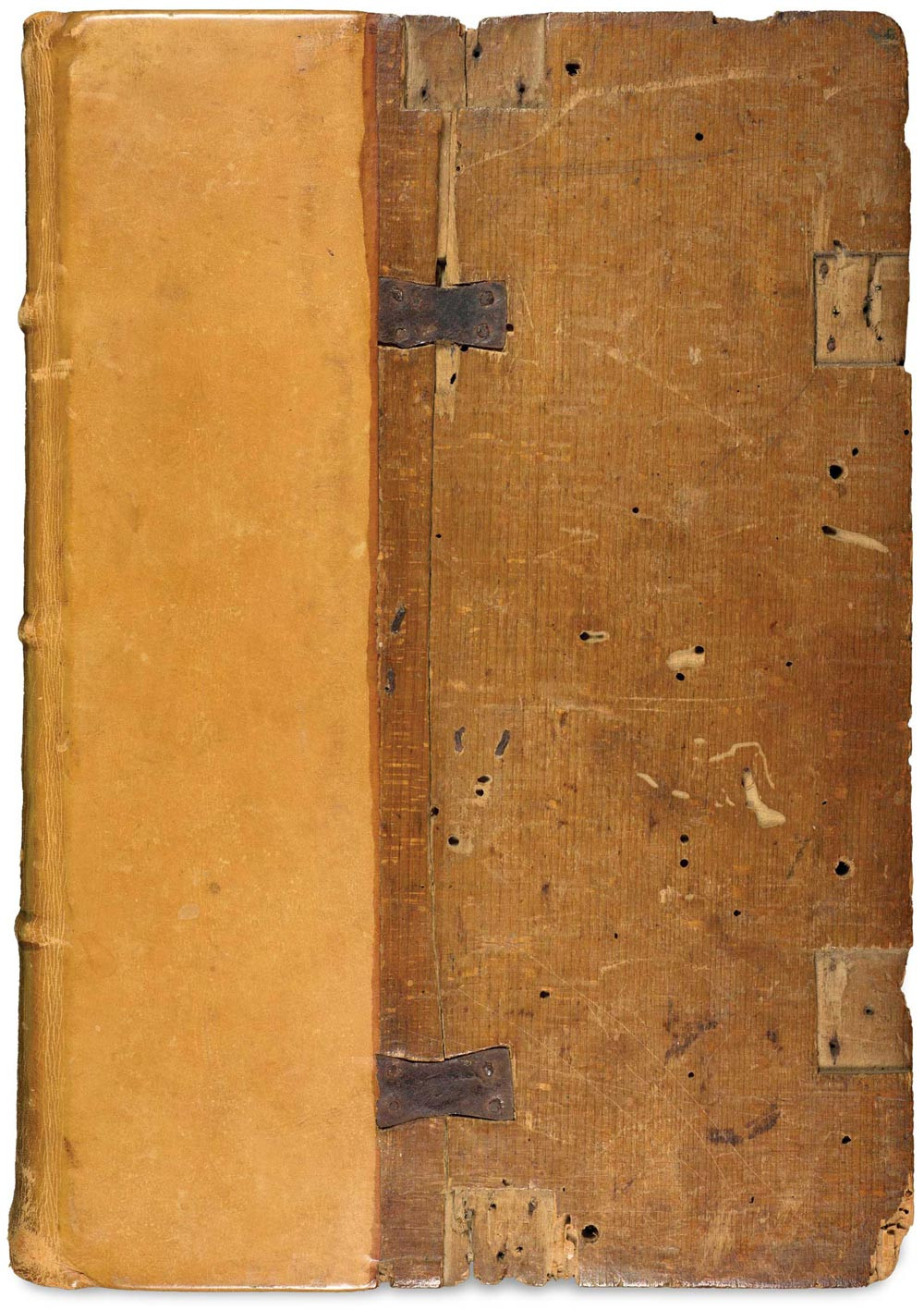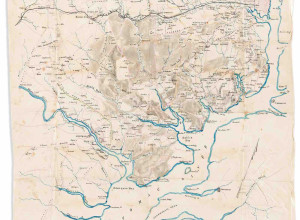To produce a piece of parchment, the parchment maker placed the skin of an animal (usually a cow or sheep) on a frame, and scraped away the outer layers of hair and skin. During the process, the skin would be tightened on the frame, and a tiny hole in the skin would become much larger as the skin was stretched and re-stretched. Some of these holes would be repaired by sewing them together, and others would be patched, but some were left as is. When looking at a manuscript, it’s usually easy to tell if a hole has been there since the piece of parchment was made. If the hole was there when the scribe was writing the book, he simply wrote around the hole, and evidence of this practice can be seen in many medieval manuscripts.
The holes made by scribes when they worked on a book’s layout are usually a great deal smaller than the holes that developed when the piece of parchment itself was made. These holes (or prickings, as they are usually called in medieval manuscripts) can often be found on the untrimmed outer margins of leaves, where they marked the spacing of the lines, and they can occur in a regular or irregular vertical pattern. The holes were usually produced with the point of a knife or of another sharp object, such as an awl, and a number of leaves might be pricked simultaneously. In some cases, it can be deduced that a wheeled tool with points was used, by looking at the slightly irregular, but consistent, marks left by the wheel, as it was rolled down the sides of the leaves to make the small holes that would guide the spacing.
Printed books don’t have the same kinds of layout marks that manuscripts do, but the process of printing, especially during the period in which printing was done by hand, can also leave its traces in the form of holes. One of the more interesting pieces of evidence left by the operation of the handpress is the presence of “point holes.” These holes, which are often mistaken for the numerous holes that were made when the book was sewn for binding, occur in different places in books of various formats (e.g., folio, quarto, octavo, duodecimo). They’re hard to find, though, because they’ve usually been trimmed off or made invisible by the binding of the book. “Points” were the sharp metal projections used to pierce a sheet of paper and hold it in place on the tympan of a printing press, and the points needed to be placed carefully (and asymmetrically) to make it obvious to a pressman if a sheet were turned the wrong way around when it was put back on the press to print its other side. Point holes can be identified by their asymmetrical placement, and they’re most often visible in untrimmed books that are unbound, or which have been disbound. They tend to be much more visible in incunabula than in later books, and though they can be difficult to find, they’re interesting to look for, and they remain unknown to most collectors.

